Stardew Valley has been a really popular game on the PC for a while now, and now it’s on the Nintendo Switch there has been a surge of interest. The farming simulator might not be the most adrenaline-packed game out there, but that’s part of its charm: for hardcore gamers, it’s nice to take a break from FPS games where you hunt aliens to grow some cabbages.
It turns out, though, that growing cabbages is actually pretty complicated. Like all good sandbox games, Stardew Valley gives you a huge amount of freedom. What you do every day is completely up to you, and that can be a little overwhelming.
On that note, I’ll let you into an embarrassing little secret. I actually find Stardew Valley super stressful. That’s because (I’m embarrassed to admit) it’s too similar to my everyday job. If you work in an office, with a regulated schedule and work hours, I imagine that a game where you get to decide whether to buy seeds, go fishing, or herd your ducks would be great. That, after all, is the ‘storyline’ of the game.
(Un)fortunately, making a living by writing articles like this gives me a lot of freedom. That’s great, but I’ve often sat around in the morning trying to decide whether to write an article, grow some cabbages, go to the beach, read a book, or go talk to girls. So Stardew Valley, for me, is … simulation of real life. Sorry, but that’s just the way it is. But you can join us if that sounds nice.
In any case, when you first start playing Stardew Valley it can be a little tricky working out what to do. So I’m here to help. 🐔 🎮
Stardew Valley Basic Tips: 4 Things To Do Every Day
Ok, so the first thing to realize about Stardew Valley is that your most precious resource is time. The days don’t last that long, and if you are caught outside at night, you’ll be in trouble. So you should decide on one thing to do each day because that’s all you get time for.
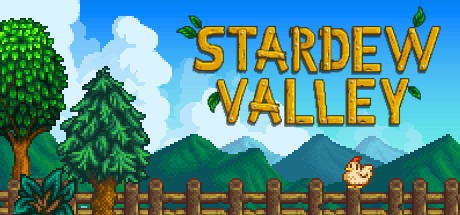
That said, there are a few small things you can do every day that will keep your game ticking over, and don’t take too much time.
#1 Watch Some TV
Watching TV might sound a little boring when you want to go out and tend to the farm, but it’s worth it because you can check the weather. Look for rain days. The rain will automatically water all your crops, saving you a lot of time and effort. So checking the weather will help you to plan out your week.
#2 Talk To Your Neighbors
When you start the game, you’ll have a quest to talk to everyone. It’s not necessary, but you should definitely talk to people you run into. As you talk to them more, you will get new dialogue lines, and they will help you out.
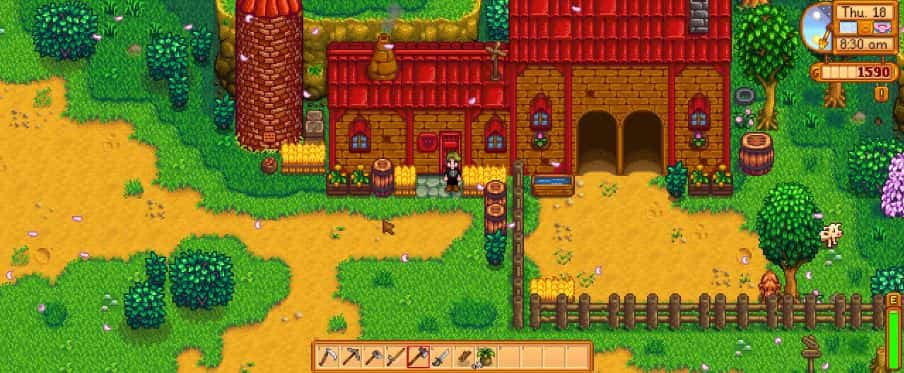
You should also pick a particular character to romance, and make sure you talk to them as often as possible. Eventually, they will give you a hint about what kind of gift they would like. The calendar in Pierre’s shop lists the birthdays of every character, so get them their gift on their birthday. They’ll fall in love with you in no time. You can also buy a calendar from Robin’s shop, which saves a trip to town.
#3 Make Some Chests
When you first start your farm, you’ll find that you’ve got loads of random items. It might seem like you should sell these to get some money for farming, but don’t do that. Make some chests: they only cost 50 wood and can store loads of items.
Put all your random items in a chest, even if you don’t know what they do yet. You’ll need specific items for quests later on, and if you sold it you’ll have to re-buy stuff. You should only sell harvested crops at the beginning, and saving-up loads of money is actually not that important unless you really want a special item.
#4 Go See The Merchant and Dig Up Worms
A traveling merchant appears every Friday and Sunday at the northwest side of Cindersnap forest, which is just to the south of your farm. He sells a selection of items. They might seem a bit expensive in comparison to the same items in the village shop, but there is a reason for that: some of them are out-of-season, and so they are useful. If you are looking for some rare items, go see him.
Oh, and you should also look out for worms. You’ll see them in dirt or sand sometimes, and if you dig them out they will often give you interesting items.
Stardew Valley Farming Guide
One of the joys of Stardew Valley is learning on the job. During your first year of farming, you’ll learn a load of stuff that you wish you knew at the beginning. I won’t tell you all of these tips (that would remove the fun), but here are some tips that will help you get started with this addictive ‘tycoon’ game:
Choose the Default Farm
If you’re a beginner, choose the default farm. It’s set up to teach you everything you need to know about farming. The other farms are only for experienced players who want an extra challenge.
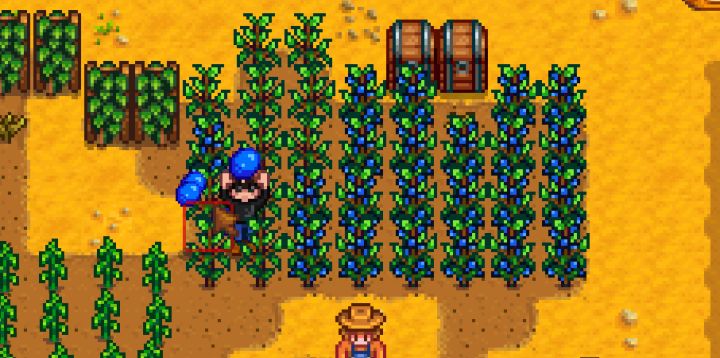
You can choose one of those next time!
Make 3×3 Patches
Later on in the game, you’ll get access to a sprinkler, and it will be able to automatically water a 3×3 patch of crops. You don’t have it right now, but it plays to prepare. So when you first start, you should get into the habit of planting your crops in 3×3 patches. This will also be helpful when you get the watering can, which you’ll get shortly, and saves you having to re-organize everything after a few months.
Pay Attention to the Seasons
Seasons are one of the key mechanics of Stardew Valley, so make sure you work them out early. Here’s how it works. Each season is 28 days long, and every crop has a particular season (or a mix of seasons). They will only grow in the right season, and if you don’t harvest them before the end of that season, they will die. That’s super annoying.
In the beginning, this is not too difficult, because the first crops you’ll have access to only take 6 days to grow. Later on, some crops might take almost a whole season to grow. In practice, make sure you check the calendar frequently and make sure you know when the end of the season is coming up.
Make Some Scarecrows
Once you level up a few times, you can start to make scarecrows. These are super useful, because … they scare crows. They cover an area of 8×8 tiles, so if you’ve planted in 3×3 patches, you can put them in the middle of 4 patches.
Stardew Valley Mining
During your first year, it might seem like Stardew Valley is just about tending to your crops and finding a wife or husband. In a way, it is, and you can stop there if you like. But there is also another part to the game: the mines. Going into the mines can be pretty hard at first, but it’s super fun once you get the hang of it. It works a bit like the older Legend of Zelda games, with some basic combat and exploring.
In the mines, you’ll be able to collect some rare items that you’ll need to make ‘advanced’ machinery for your farm. This includes sprinklers, which are super useful, so make a quick trip to the mines for that if nothing else.
Take It Slow
When you first venture into the mines, you should be focused on getting ore. Copper, iron, and gold ore are needed for upgrading and making some useful items. So find some ore, mine it with the pickaxe, and then get out. If you’re new in the mines, don’t spend too long down there: you’ll get mobbed and then killed by monsters.
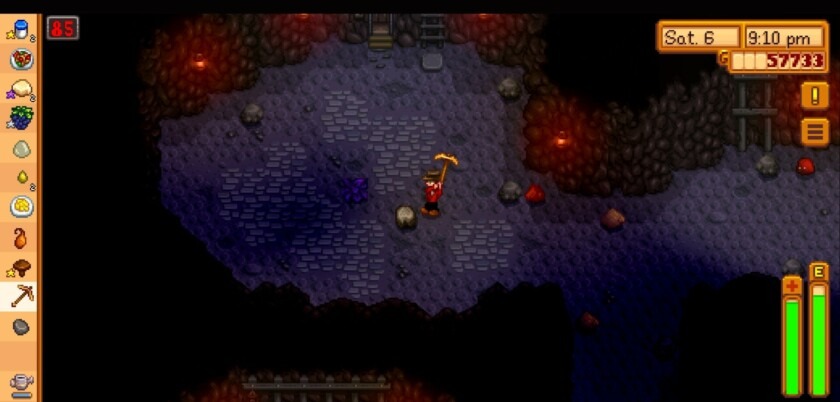
The mines have elevators every five floors to help you move around, so scouting around on a floor with an elevator is the safest. That way, you can run away if you need to. There are also bonus items every ten floors, so it’s worth exploring those.
Don’t Die
That sounds like an obvious piece of advice, but it’s actually pretty hard to die in the mines. It’s the only time, really, that the game feels tense. If you’re in the mines and you start to get low on health or energy, start heading back. The cost of dying down there is pretty high. Not only will you lose quite a few of your items, but you’ll have wasted a day.
So here’s the strategy. Prioritize gathering ore. Using your sword doesn’t use up your energy, but using the pickaxe does. So get some ore, and then kill some monsters if you need to. You’ll also need to carefully manage your health and resources, which you can replenish with food or crops.
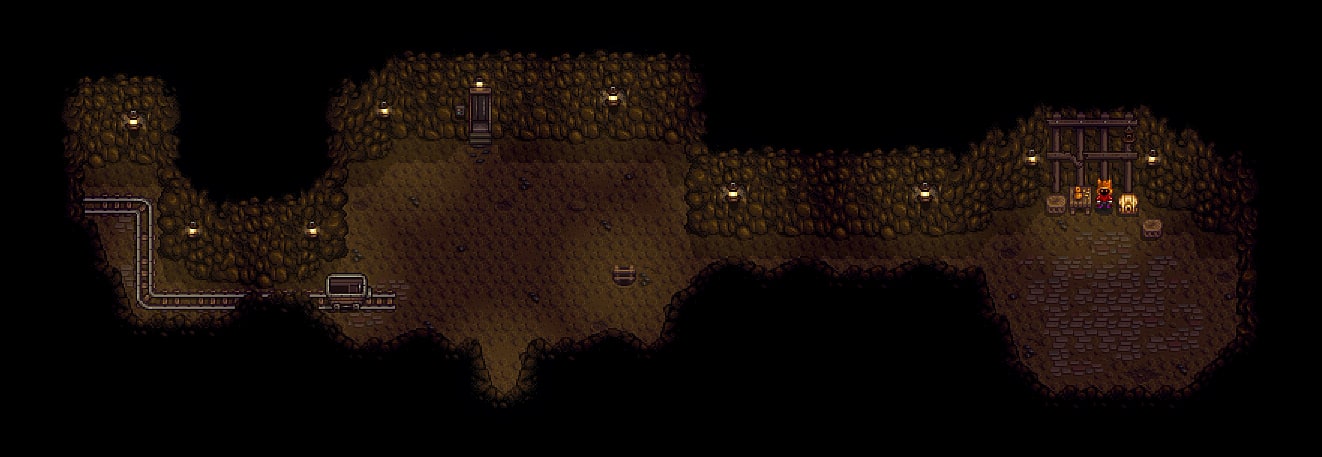
Once you start running low on health or energy, try and get to an elevator. Sometimes, a ladder appears that will get you out of the mines. It appears randomly, though, so don’t rely on it. Once you’ve done a few trips to collect ore, you can craft some better weapons. Then you can come back, and kill all the monsters you want.
Crafting Stairs
Once you progress through the game a little bit, you’ll get the ability to craft stairs. A set of stairs costs 100 stones, which sounds expensive before you realize that the mines are full of stone, and you’re going to collect a lot down there anyway. Stairs are a really useful way to quickly get to an elevator floor quickly, and it’s worth saving a set in case you get in trouble.
Upgrading
Once you’ve been on a few trips to the mines, you’ll have enough resources to start to upgrade your equipment. There are dozens of paths you can take through the technology tree of the game, so knowing what to upgrade first can be a bit tricky.
Here’s my advice: upgrade your watering can and pickaxe first. Once you’ve got enough copper to upgrade to the copper watering can do that. It will let you water crops in a 1×3 grid without using any extra resources (or time). The pickaxe upgrades will let you mine much more quickly, which in turn will get you access to other upgrades more quickly.
Once you’ve done that, get the ax upgrade, because it will let you clear out the big trees from your farm. And then the hoe, which will be useful for later in the game.
Also bear in mind that these upgrades take two days, which can make them a little tricky. That’s when checking the weather is really useful. Plan to upgrade your equipment the day before a rain day, so the rain takes care of watering whilst you are upgrading. Then the next day, you can head out with your new watering can, and get going.
Stardew Valley Community Center
The Community Center can be a pretty stressful part of Stardew Valley, especially when you are getting started. The challenges that it contains are hard and require you to bring obscure items, and some that only appear in particular seasons. Completing a bundle will give you a small reward, and completing a set of them will unlock new areas of the map.
Be aware that completing these bundles is going to take time. Even the first challenges are hard, and if you miss a seasonal item you’ll have to wait for ages before being able to complete it.
But here’s the thing. Completing the bundles is one of the most satisfying parts of the game, and so it’s worth doing that even if it’s hard. Early on in the game, Morris from Joja, the big supermarket, asks the town mayor to sell the community center. You can, if you like, pay a huge price for that to happen. But, in my opinion, it’s not worth it. It takes a lot of the challenge – and a lot of the fun – out of the game.
Go Your Own Way
So there we have it. These tips should help you to get started with Stardew Valley and should take some of the frustration out of the first few seasons on your farm. As with other outstanding simulation games, it’s always a good idea to prepare for future upgrades right from the beginning, so you don’t have to re-organize everything.
You should also take it slow. The pace that you progress at in Stardew Valley can sometimes seem to be glacial in comparison to and RPG, but that’s part of the vibe of the game. If you want to spend the day fishing, for no other reason than you enjoy it, do that. Though there is technically a time limit, no-one is going to judge you for embracing the slow life.
You can also, of course, come up with your own way of doing things. People can get really creative with the way they lay out their farms, and what they choose to upgrade first. I’m sure some experienced players might think that my tips are not that useful. But that’s what the comments section is for!
Above all, don’t stress. Whatever your route to a profitable farm and a happy marriage, be assured that you’ll get there, and (one day) you will.
Also, make sure to check out other games like Stardew Valley, if you’re a fan.